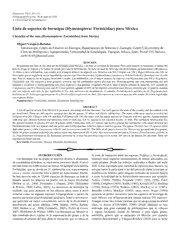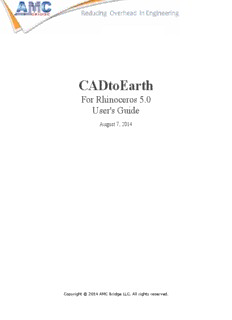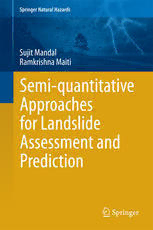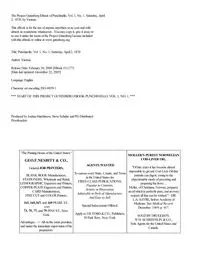
Schelling's Segregation Model: Parameters, scaling, and aggregation PDF
Preview Schelling's Segregation Model: Parameters, scaling, and aggregation
DemographicResearchafree,expedited,onlinejournal ofpeer-reviewedresearchandcommentary inthepopulationsciencespublishedbythe MaxPlanckInstituteforDemographicResearch Konrad-ZuseStr. 1,D-18057Rostock·GERMANY www.demographic-research.org DEMOGRAPHICRESEARCH VOLUME21,ARTICLE12,PAGES341-366 PUBLISHED15SEPTEMBER2009 http://www.demographic-research.org/Volumes/Vol21/12/ DOI: 10.4054/DemRes.2009.21.12 ResearchArticle Schelling’sSegregationModel: Parameters,scaling,andaggregation AbhinavSingh DmitriVainchtein HowardWeiss (cid:176)c 2009AbhinavSinghetal. Thisopen-accessworkispublishedunderthetermsoftheCreative CommonsAttributionNonCommercialLicense2.0Germany,whichpermits use,reproduction&distributioninanymediumfornon-commercial purposes,providedtheoriginalauthor(s)andsourcearegivencredit. Seehttp://creativecommons.org/licenses/by-nc/2.0/de/ TableofContents 1 Introduction 342 1.1 DescriptionoftheModel 343 2 Schelling’ssegregationisasmallcityphenomenon 344 3 Simulations 346 4 Analysis 351 4.1 MeasuresofAggregation 351 4.2 GlobalaggregationdependenceontheneighborcomfortthresholdT 353 4.2.1 T=3:sparseclusters 353 4.2.2 T=4:compactclustersandmesoscaleaggregation 355 4.2.3 T=5:finalstateswithmanyunhappyagents 356 4.3 Numberofstepsintheevolution 357 5 FinalstateswithN=50,N=100andN=200 358 6 Concludingremarksandacknowledgements 362 References 364 DemographicResearch:Volume21,Article12 ResearchArticle Schelling’sSegregationModel: Parameters,scaling,andaggregation AbhinavSingh1 DmitriVainchtein2 HowardWeiss3 Abstract ThomasSchellingproposedasimplespatialmodeltoillustratehow,evenwithrelatively mild assumptions on each individual’s nearest neighbor preferences, an integrated city wouldlikelyunraveltoasegregatedcity, evenifallindividualspreferintegration. This agentbasedlatticemodelhasbecomequiteinfluentialamongstsocialscientists,demogra- phers,andeconomists.Aggregationrelatestoindividualscomingtogethertoformgroups and Schelling equated global aggregation with segregation. Many authors assumed that thesegregationwhichSchellingobservedinsimulationsonverysmallcitiespersistsfor larger,realisticsizedcities. Wedescribehowdifferentmeasurescanbeusedtoquantify the segregation and unlock its dependence on city size, disparate neighbor comfortabil- itythreshold,andpopulationdensity. Wedevelophighlyefficientsimulationalgorithms andquantifyaggregationinlargecitiesbasedonthousandsoftrials. Weidentifydistinct scalesofglobalaggregation. Inparticular,weshowthatforthevaluesofdisparateneigh- borcomfortabilitythresholdusedbySchelling,thestrikingglobalaggregationSchelling observed is strictly a small city phenomenon. We also discover several scaling laws for theaggregationmeasures.AlongthewayweprovethatintheSchellingmodel,inthepro- cessofevolution,thetotalperimeteroftheinterfacebetweenthedifferentagentsalways decreases,whichprovidesausefulanalyticaltooltostudytheevolution. 1SchoolofPhysicsandCenterforNonlinearScience,GeorgiaTech,USA,E-mail:abhinav.singh@gatech.edu. 2DepartmentofMechanicalEngineering,TempleUniversity,USA;SpaceResearchInstitute,Moscow,Russia, E-mail:dmitri@temple.edu. 3School of Mathematics and Center for Nonlinear Science, Georgia Tech, USA, E-mail: weiss@math.gatech.edu. http://www.demographic-research.org 341 Singhetal.:Schelling’sSegregationModel:Parameters,scaling,andaggregation 1. Introduction Inthe1970s,theeminenteconomicmodelerThomasSchellingproposedasimplespace- time population model to illustrate how, even with relatively minimal assumptions con- cerning every individual’s nearest neighbor preferences, an integrated city would likely unravel to a segregated city, even if all individuals prefer integration (Schelling 1969; Schelling 1971a; Schelling 1971b; Schelling 2006). His agent-based lattice model has becomequiteinfluentialamongstsocialscientists, demographers, andeconomists. Cur- rently, thereisaspiriteddiscussiononthevalidityofSchelling-typemodelstodescribe actualsegregation,withargumentsbothfor(e.g.,Young1998;Fossett2006),andagainst (e.g., Massey 1990; Laurie and Jaggi 2003), and a few authors have used and extended theSchellingmodeltoaddressactualpopulationdata(Clark1991;BruchandMare2006; Benensonetal.2006;Sander,Schreiber,andDoherty2000;ClarkandFossett2008).The fewexamplesofquantitativeanalysesofsuchmodelsare(PollicottandWeiss2001;Fos- sett 2006; Gerhold et al. 2008). Recently, Zhang (2004) proved analytically that, for certain wedge-like utility functions and with additional random noise, the equilibrium statespossessahighdegreeofsegregation. Aggregation relates to individuals coming together to form groups or clusters, and Schelling equated global aggregation with segregation. Many authors assume that the striking global aggregation observed in simulations on very small ideal “cities" persists forlarge, realisticsizecities. Arecentpaper(VinkovicandKirman2006)exhibitsfinal statesforasmallnumberofmodelsimulationsofalargecity,andsomefinalstatesthat do not exhibit significant global aggregation. However, quantification of this important phenomenonislackingintheliterature,presumablydueinparttothehugecomputational costsrequiredtorunsimulationsusingexistingalgorithms. Wedevelophighlyefficient andfastalgorithmsthatallowustocarryoutmanysimulationsformanysetsofparame- tersandtocomputemeaningfulstatisticsofthemeasuresofaggregation. Theobjectiveofthispaperistoquantifytheaggregationandunlockitsdependence on city size, disparate neighbor comfort threshold, and population density. One of the measuresisthetotalperimeterofaconfiguration: thetotalnumberofcontactsbetween theagentsofdifferentkind, adjustedtothepresenceofemptyspaces. Weprovethatas the system evolves, the total perimeter decreases at every step. This provides a useful analytical tool to study the evolution: it necessitates that the evolution of the Schelling modelalwaysconvergestoalimitconfigurationafterafinitenumberoftimesteps. We identifydistinctscalesofglobalaggregation,andinparticular,weshowthatforthevalues of disparate neighbor comfort threshold used by Schelling, the striking global aggrega- tion Schelling observed is strictly a small city phenomenon. We also discover several remarkablescalinglawsfortheaggregationmeasures. 342 http://www.demographic-research.org DemographicResearch:Volume21,Article12 1.1 DescriptionoftheModel WeexpandSchelling’soriginalmodel4toathreeparameterfamilyofmodels. Thephase space for these models is the N ×N square lattice with periodic boundary conditions (opposite sides identified). We consider two distinct populations, that, in Schelling’s words,referto“membershipinoneoftwohomogeneousgroups: menorwomen,blacks and whites, French-speaking and English speaking, officers and enlisted men, students and faculty, surfers and swimmers, the well dressed and the poorly dressed, and any other dichotomy that is exhaustive and recognizable” (Schelling 2006). We denote by B (black squares) and R (red squares, appear grey on black and white printing) these two populations. See Fig. 1. Together these agents fill up some of the N2 sites, with V remaining vacant sites (white squares). Each agent has eight nearest neighbors, cor- responding to Moore, or Queen, neighborhood. Different neighborhoods were studied indifferentpapers(see,e.g,Fossett2006; ClarkandFossett2008,wherethesizeofthe neighborhood was referred to as ‘vision’). Fix a disparate neighbor comfort threshold T ∈ {0,1,...,8}, and declare that a B or R is happy if T or more of its nearest eight neighborsareB’sorR’s,respectively. Else,itisunhappy. Figure1: A:AsimulationofSchelling’soriginalmodelwithN = 8; B:OursimulationwithN = 100. A B 4DifferentauthorsfrequentlyconsiderslightlydifferentversionsofSchelling’soriginalmodel,i.e.,different waysofmovingboundaryagents.Allversionsseemtoexhibitthesamequalitativebehaviors,andthuswerefer totheSchellingmodel. http://www.demographic-research.org 343 Singhetal.:Schelling’sSegregationModel:Parameters,scaling,andaggregation Demographically, theparameterN controlsthesizeofthecity, v = V/N2 controls thepopulationdensityortheoccupancyratio(BusinessLocate2009),andT isan“agent comfort index” that quantifies an agent’s tolerance to living amongst disparate nearest neighbors. In choosing the algorithm of evolution we followed the protocol introduced in the originalSchellingpaper(Schelling1969)andlaterusedinPortugali,Benenson,andOmer (1994) and Benenson et al. (2006). We begin the evolution by choosing an initial con- figuration(describedinSect.3)andrandomlyselectinganunhappyBandavacantsite surroundedbyatleastT nearestBneighbors. Providedthisispossible, interchangethe unhappyBwiththevacantsite,sothatthisBbecomeshappy.Wethenrandomlyselectan unhappyRandavacantsitehavingatleastT nearestneighborsoftypeR.Providedthis ispossible,weinterchangetheunhappyRwiththevacantsite,sothatRbecomeshappy. We repeat this iterative procedure, alternating between selecting an unhappy B and an unhappyR,untilafinalstateisreached,wherenointerchangeispossiblethatincreases happiness.Forsomefinalstates,some(andinsomecases,many)agentsmaybeunhappy, buttherearenoallowableswitches. Forthesakeofcompleteness,wecarriedoutsimulationsusingotheragentselection protocols, including random selection schemes. We observed no significant differences in the final states using the other selection schemes. This supports the claim in Young (1998)thatthe finedetails ofthe evolutionhavenegligibleinfluence on thestructure of thefinalstates. 2. Schelling’ssegregationisasmallcityphenomenon SchellingconsideredthecasescitysizeN = 8,neighborcomfortthresholdT = 3,and vacancyratiov = 33%. ForT = 3or4, andv = 0, a“checkerboard"configurationof B’s and R’s (imagine placing B’s on the red squares and R’s on the black squares of an actualcheckerboard)isafinalstate,sinceallagentshavefourlikenearestneighbors. To generate his initial configurations, Schelling begins with a checkerboard config- urationwithoutperiodicboundaryconditionsandrandomlyremovesapproximatelyone thirdoftheB’sandR’s,keepingequalnumbersofbothagents(Schelling2006). Werefer totheresultasadeletedcheckerboardconfiguration. Removingtheseagentsmakessome oftheremainingagentsunhappyanddrivestheevolution. Severalauthorshaveobserved that removing such a large percentage of agents is unnatural, but it is crucial to attain aggregationinSchelling’smodel. Removingfeweragentsresultsinafinalconfiguration closetotheinitialconfiguration. Finally,Schellingmodifiesthedeletedcheckerboardby randomlyaddingatotalof5B’sand5R’sinvacantspaces. Suchaninitialconfiguration isassumedtobeaproxyforanearlyintegratedcity. 344 http://www.demographic-research.org DemographicResearch:Volume21,Article12 The final state of a typical run of Schelling’s original model system is presented in Fig. 1A. Schelling performed many simulations by hand using an actual checkerboard, andobservedthatthefinalstatespresentedasignificantdegreeofglobalaggregation. He equatedtheglobalaggregationwithsegregationofacity. In this paper, we investigate whether the global aggregation that Schelling observed for very small lattices persists for larger lattices. In Fig. 1B, we present a characteristic finalstateforoursimulationswithcitysizeN =100. ComparingFigs.1Aand 1B,one canseeastrikingqualitativedifferencebetweenthetwofinalstates. Whilethereissome localaggregationinthefinalstatewithN =100,thereisnoglobalaggregation. Visually inspecting this and other final states, one immediately sees that the global aggregation observedbySchellingisasmalllatticephenomenon. Toquantifythedifferenceinaggregationbetweenasmallcity(N = 8)andalarger city(N =100)weusedacombinationoftwoaggregationmeasures: thenumberofclus- tersinthefinalstateofthemodelandthenormalizedaveragesizeofindividualclusters (see Sect. 4.1 for a detailed description of these and several other measures of aggrega- tion). Wedeterminethenormalizedaveragesizeofaclusterbydividingtheaveragesize ofaclusterbythetotalnumberofagentsinthecity. Thelatterdeterminestheproportion ofacitycoveredbyanindividualclusterandprovidesawaytocompareaggregationbe- tweencitiesofdifferentsizes. Figure2showsthemeanvaluesofthesetwoaggregation measuresinthefinalstatesofcitiesoftwosizes(N =8and100). Wecomputethemean valuesofthetwomeasuresbasedon100trialsforeachchoiceofthevacancyratiovand neighbor comfort threshold T = 3. We observe that the normalized average size of a clusterinthelargecityissmallerthanoneinasmallcity. Thisimpliesthatanindividual clusterinalargecitycoversasmallerproportionofthecityascomparedtoaclusterin asmaller city. Most finalstates ofthe smallcity aresegregatedintotwoclusters forall choicesofthevacancyratiowhilethenumberofclustersinthelargecityincreasesfrom 22 for a city with 24% empty locations to 55 for a city with 33% empty locations. As we move from a small city to a large one, the relative size of a cluster in the final state decreases and the number of clusters increases. This shows that the large scale global aggregationobservedbySchellingisstrictlyasmallcityphenomenonanddoesnotoccur forlargercities. In Sections 3 through 5 we quantify the global aggregation using several new mea- sures, and we analyze the structure of the final states for different values of neighbor comfortthresholdT,vacancyratiov,andcitysizeN. http://www.demographic-research.org 345 Singhetal.:Schelling’sSegregationModel:Parameters,scaling,andaggregation Figure2: Aggregationmeasurestodistinguishbetweenasmallcity(N = 8) andalargecity(N = 100)forconstantneighborcomfortthresh- oldT = 3anddifferentvaluesofvacancyratiov. A:Normalizedaveragesizeofanindividualcluster. B:Numberofclustersinthefinalstateofacity. 3. Simulations Wearethefirstauthorstoquantifyaggregationinalargecitybasedonalargenumberof simulations. We develop highly efficient algorithms to simulate the model and quantify theaggregation. Wecurrentlyneedapproximatelyoneminutetorunasinglesimulation for a city of size N = 100 and we ran more then nine thousand simulations for this manuscript. We achieve this boost in speed by coming up with innovative ways to de- terminethehappinessofeachagentandtofindasuitablelocationforanunhappyagent. We exploit the ability of modern software packages such as NumPy (Oliphant 2006) to efficientlymanipulatematrices;wecannowcomputepropertiesofallagentsinacitysi- multaneouslythusescapingtheslowprocessofdealingwitheachagentindividually. The speedatwhichwefindanunhappyagentinthecityandasuitablelocationforitdeter- minesthespeedofthesimulation. Naivelylookingateachagentinthecitytodetermine ifitisunhappyandtestingeachemptylocationtodetermineifitisasuitablelocationfor an unhappyagent, makesthe simulation much slower. A much more efficient approach istoconstructmatriceshighlightingtheunhappyagentsinthecityandsuitablelocations forunhappyagents. Theunhappinessofanagentandthesuitabilityofalocationareboth based on the number of similar neighbors in the neighborhood of a given location. As anexampleoftheefficiencygainedbymatrixmethods,weoutlinethestepstodetermine 346 http://www.demographic-research.org DemographicResearch:Volume21,Article12 the number of R agents surrounding each agent in the city simultaneously. In our ‘city matrix’, an R agent is represented by 1, a B agent by -1 and an empty location by 0. Therefore,theproblemofdeterminingthenumberofsurroundingRagentsisreducedto addingupthe1’sintheneighborhoodofeachagentandignoringthe-1’s. Weignorethe -1’sbysimplyfindingtheabsolutevalueofeachelementinthecitymatrix;thisconverts the -1’s into 1’s but leaves the 1’s and 0’s unchanged. We call this modified matrix the ‘absolutevaluematrix’. Whenweaddthecitymatrixandtheabsolutevaluematrix,all the -1’s are gone and the sum of all the elements gives the number of R agents in the 8-point neighborhood. Similar methods can be used to speed up the process of finding suitablelocationsforunhappyagentsandcomputingaggregationmeasures. WestudythedynamicsforlargelatticesandpresentourresultsmostlyforcitysizeN = 100. Figures 2-7 are all based on N = 100. In the last section, we discuss the cases N =50andN =200,andshowthatN greaterthan100doesnotleadtoqualitativelyor quantitativelydifferentstatesandphenomena. Werestrictourdiscussiontocitieshaving anequalnumberofB’sandR’s. Wewillreporttheresultsonthedynamicswithdifferent proportionsofB’sandR’sinaseparatemanuscript(Singh,Vainchtein,andWeiss2009). WeconsiderneighborcomfortthresholdT =3,4,5andvacancyratiovbetween2% and 33%. The system does not evolve very much for other values of T: for T = 1,2 almostalloftheagentsaresatisfiedinmostoftheinitialconfigurations,whileforT ≥6 therearealmostnolegalswitches. Valuesofvlargerthan33%correspondtounrealistic environments. For each pair of parameters T and v, we perform 100 simulations. This number of simulations was chosen to ensure a 95% confidence interval for parameter estimation. TheCentralLimitTheoremprovidesconfidenceintervalsforthemeanvalues oftheaggregationmeasures. We choose the initial configuration by starting with a checkerboard with periodic boundaryconditions. Demographically,acheckerboardconfigurationisamaximallyin- tegratedconfiguration. Wethenrandomlyremovehalftheintendedvacantlocationsv/2 ofbothB’sandR’s(thuskeepingequalnumbersofbothagents). Werandomlypermute agentsintwo3×3blocks. Alternatively, wecouldchooseacompletelyrandominitial configuration. Ingeneral, exceptforsmallvaluesofv, thefinalstatesarequantitatively similartotheonesobtainedusingtheSchelling-likeinitialconditions. In Figs. 3-5, we present characteristic final states for different values of T and v. Visually,theaggregationinthefinalstateswithfixedvaresubstantiallydifferentthanin thefinalstateswithfixedT. http://www.demographic-research.org 347 Singhetal.:Schelling’sSegregationModel:Parameters,scaling,andaggregation Figure3: CharacteristicfinalstatesforneighborcomfortthresholdT = 3 fordifferentvacancyratiosv: A:v = 2%,B:v = 6%,C:v = 10%,D:v = 15%, E:v = 20%,F:v = 24%,G:v = 28%,H:v = 33%. A B C D E F G H 348 http://www.demographic-research.org
Description:The list of books you might like

What Happened to You?

Believe Me

Mind Management, Not Time Management

The Mountain Is You

sraffa's mathematical economics – a constructive interpretation

Børns angst for venepunktur

bühnentauglich?

HYMENOPTERA: Lista de especies de hormigas (Hymenoptera: Formicidae) para México

C0PY - The Anna Institute

CADtoEarth Web Application - Log In - AMC Bridge

The Restaurant: From Concept to Operation

Direct CP violation in B \to ρ^0(ω) PS

Semi-quantitative Approaches for Landslide Assessment and Prediction

Family law : cases and materials

UN TEMA EN SWING

PUNCHINELLO Vol 1 No 1

Notes And Queries Issue 67

NASA Technical Reports Server (NTRS) 19940018319: K-band mobile propagation measurements using ACTS

Cat vitae-Antonio

Supersymmetric multi-charge AdS_5 black holes

Quonset Hut: Metal Living For The Modern Age



